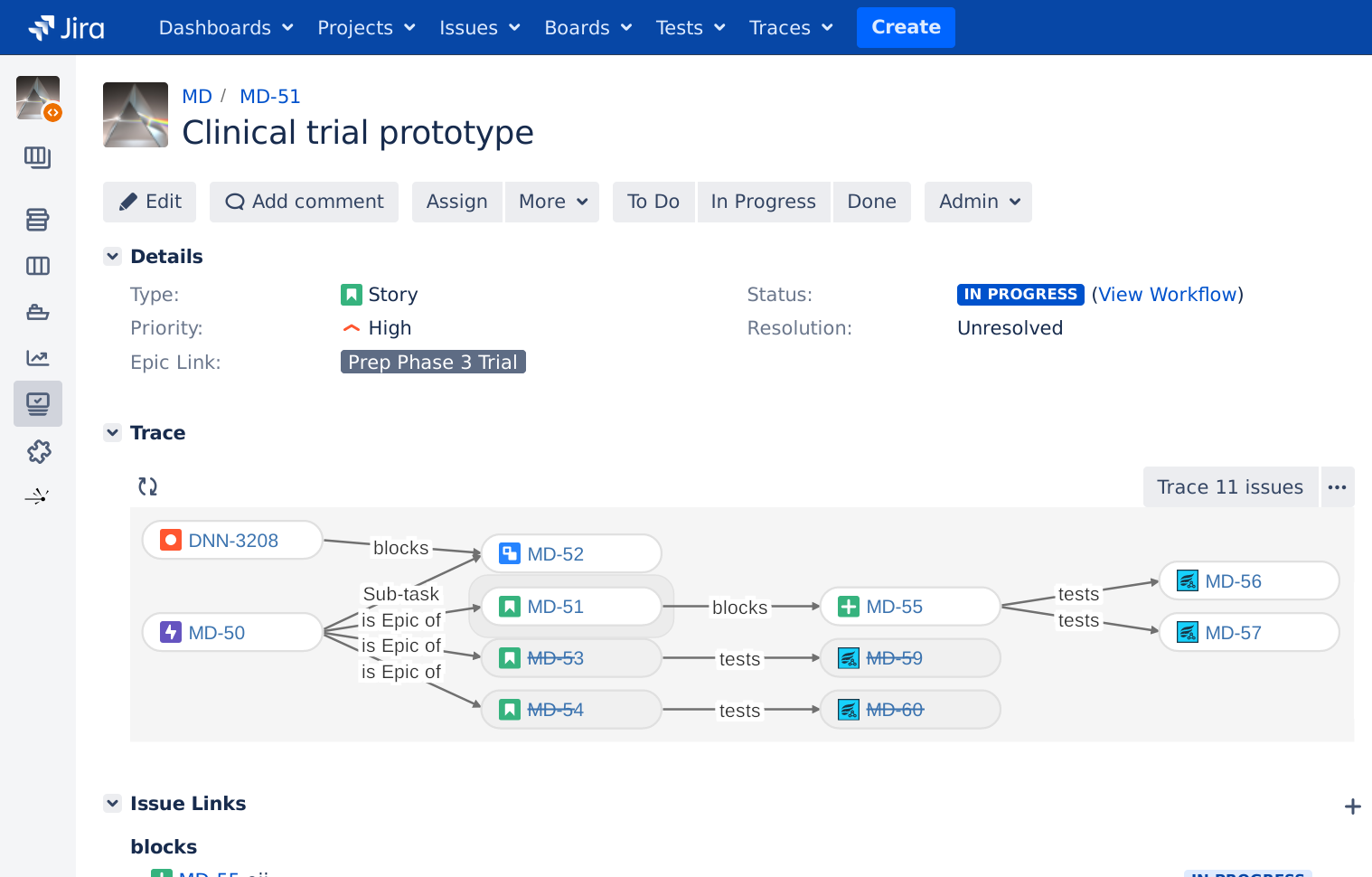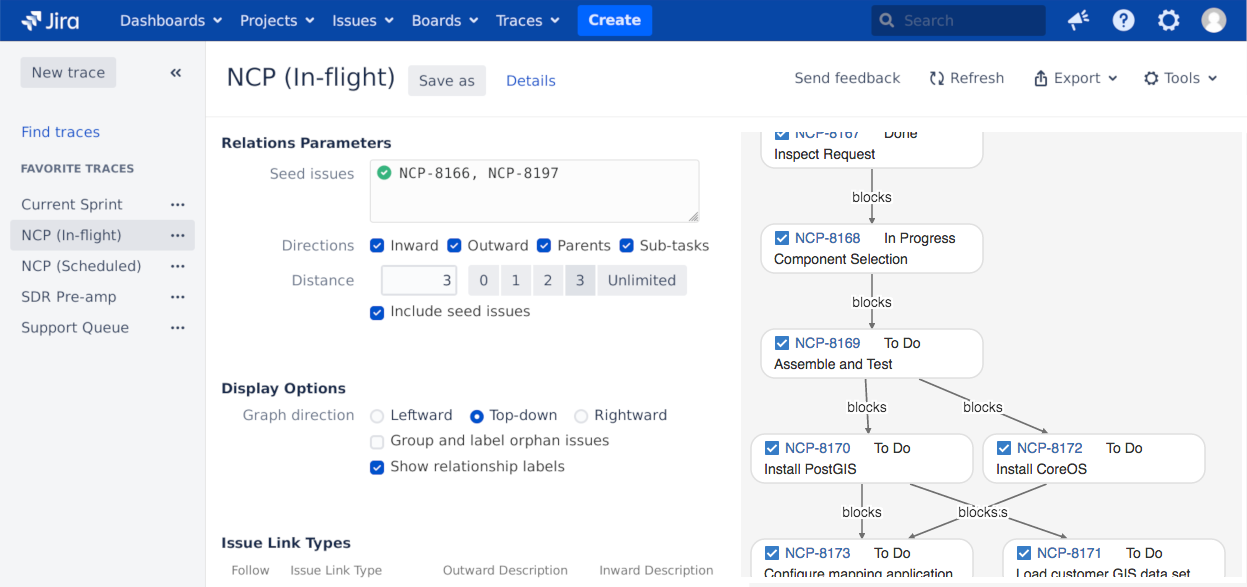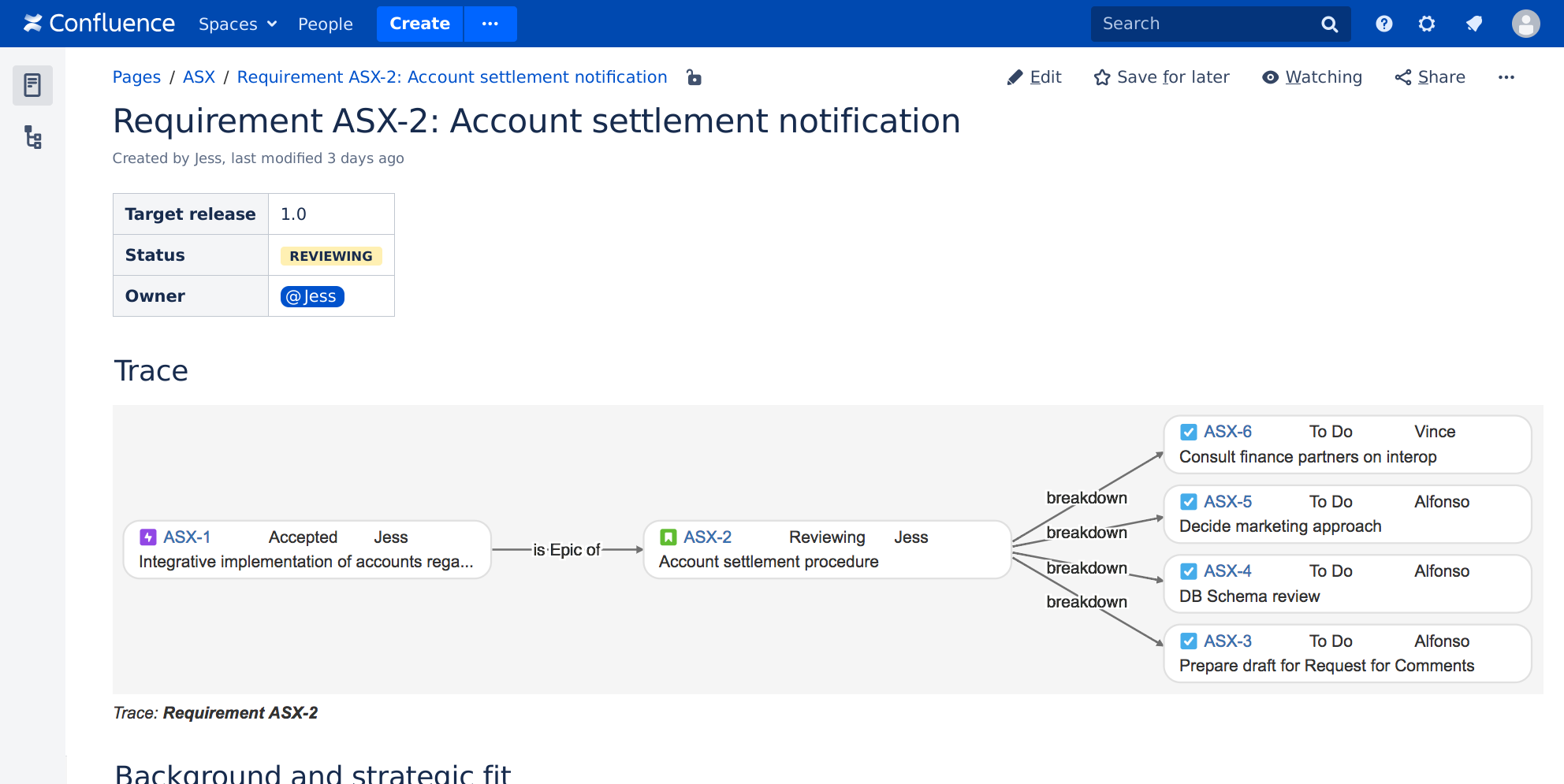 Vivid Trace TM Features
Vivid Trace TM Features Intuitive Jira dependency graphs
Visualize issues and their relations from end to end. Vivid Trace accommodates any project structure and any degree of separation between issues. No matter what issue data you have and how its links are structured, you can finally see them all.













